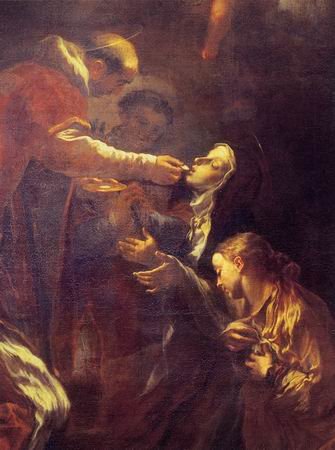Description
Livio Mehus was a seventeenth -century painter known for his work "San Pietro d'Atarantara Che communicates Santa Teresa d'Avila", which is located in the chapel of San Pietro d'encara in Rome, Italy. This painting is a representation of an episode of the life of Santa Teresa de Ávila, a Spanish mystique and writer of the 16th century.
In 1560, in the course of a visit to his province, San Pedro de Alcántara went through Avila, moved by an order received from heaven. At that time, Santa Teresa de Ávila was still in the convent of the Incarnation and crossed for an anxiety and scruples, because many people had told him that he was a victim of the demon's deceptions. A friend of the Holy got permission so that she went to spend a week at home, and there was visited San Pedro de Alcántara.
Guided by his own experience in visions, San Pedro perfectly understood the case of Teresa, dissipated his doubts, assured him that his visions came from God and spoke in favor of the saint with his confessor.
The Autobiography of Santa Teresa provides many data on the life and miracles of San Pedro de Alcántara, since he told him many details of his forty -seven years of religious life.
In Mehus's painting, San Pietro d'Atarantara, a Franciscan saint and friend of Santa Teresa de Ávila, is shown giving divine communication to the saint. The painting captures the intensity and spirituality of the moment, with a detailed representation of the characters and a dramatic lighting.
Livio Mehus was known for his ability to represent religious figures and transmit emotions through his art. His works were characterized by a baroque style, with meticulous detail attention and a rich and vibrant color palette. The painting "San Pietro d'Atarantara Che communicates Santa Teresa d'Avila" is a prominent example of his talent and his ability to capture devotion and spirituality in his works.
This work by Livio Mehus is considered a significant contribution to religious art of the seventeenth century and represents the importance of faith and spirituality in the baroque era. Painting is a visual testimony of the lasting influence of Santa Teresa de Ávila and its legacy in the religious culture of the time.

